As Sudan hurtles toward famine, its military is blocking the United Nations from bringing enormous amounts of food into the country through a vital border crossing, effectively cutting off aid to hundreds of thousands of starving people during the depths of a civil war.
Experts warn that Sudan, barely functioning after 15 months of fighting, could soon face one of the world’s worst famines in decades. But the Sudanese military’s refusal to let UN aid convoys through the crossing is thwarting the kind of all-out relief effort that aid groups say is needed to prevent hundreds of thousands of deaths – as many as 2.5 million, according to one estimate – by the end of this year.
The risk is greatest in Darfur, the Spain-sized region that suffered a genocide two decades ago. Of the 14 Sudanese districts at immediate risk of famine, eight are in Darfur, right across the border that the United Nations is trying to cross. Time is running out to help them.
The closed border point, a subject of increasingly urgent appeals from American officials, is at Adré, the main crossing from Chad into Sudan. At the border, little more than a concrete bollard in a dried-out riverbed, just about everything seems to flow: refugees and traders, four-wheel motorbikes carrying animal skins, and donkey carts laden with barrels of fuel.
READ MORE
What is forbidden from crossing into Sudan, however, are the UN trucks filled with food that are urgently needed in Darfur, where experts say that 440,000 people are already on the brink of starvation. Refugees fleeing Darfur now say that hunger, not conflict, is the main reason they left.
A mother of three, Bahja Muhakar slumped with exhaustion under a tree after her family migrated into Chad at the Adré crossing. It had been a frightening six-day journey, from the besieged city of El Fasher, along roads where fighters threatened to kill them, she said. But the family felt they had little choice.
“We had nothing to eat,” Muhakar said, motioning to the children squatting beside her. She said they often subsisted on a single shared pancake per day.
The Sudanese military imposed the edict at the crossing five months ago, supposedly to prohibit weapons smuggling. It seems to make little sense. Arms, cash and fighters continue to flow into Sudan elsewhere on the 1,400km border that is mostly controlled by its enemy, a heavily armed paramilitary group known as the Rapid Support Forces, or RSF.
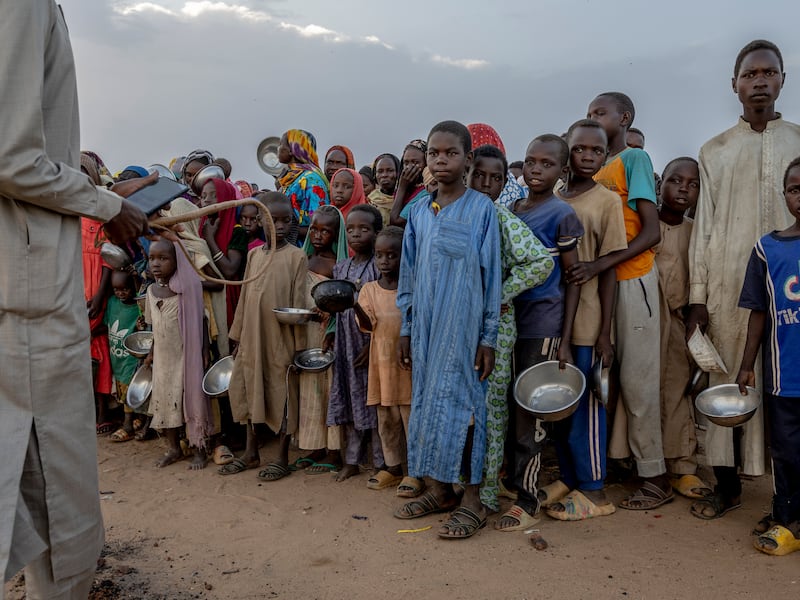
The military doesn’t even control the crossing at Adré, where RSF fighters stand 90m behind the border on the Sudanese side.
Even so, the UN says it must respect the order not to cross from the military, which is based in Port Sudan, 1,600km to the east, because it is Sudan’s sovereign authority. Instead, UN trucks are forced to make an arduous 300km detour north to Tine, at a crossing controlled by a militia allied with Sudan’s army, where they are allowed to enter Darfur.
The diversion is dangerous and expensive and takes up to five times longer than going through Adré. Only a fraction of the required aid is getting through Tine – 320 trucks of food since February, UN officials say, instead of the thousands that are needed. The Tine crossing was closed for most of this week after seasonal rains turned the border into a river.
Between February, when the Adré border crossing was shut, and June, the number of people facing emergency levels of hunger went to seven million from 1.7 million.
As the prospect of mass starvation in Sudan draws closer, the Adré closure has become a central focus of efforts by the United States, by far the largest donor, to ramp up the emergency aid effort. “This obstruction is completely unacceptable,” Linda Thomas-Greenfield, the US ambassador to the UN, recently told reporters.
Getting aid into Darfur was difficult even before the war. Adré is roughly equidistant from the Atlantic to the west and the Red Sea to the east, about 1,800km as the crow flies in either direction. Roads are rutted, lined with bribe-seeking officials and prone to seasonal flooding. A truck leaving the port of Douala, on the west coast in Cameroon, takes nearly three months to reach the Sudanese border, a UN official said.
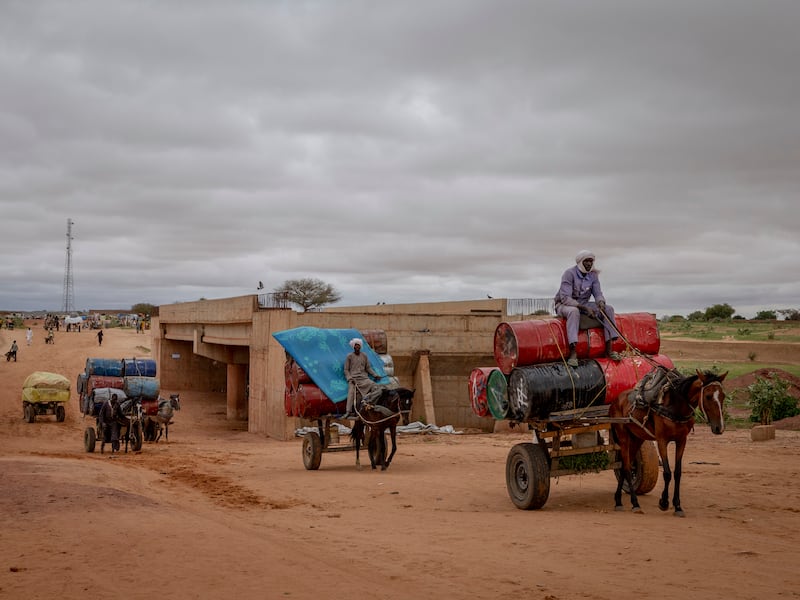
Blame for the looming famine is hardly limited to the military. The RSF also paved its path. Since the war started in April 2023, their fighters have scattered millions from their homes, burned factories that make baby food and looted aid convoys. They continue to rampage through Sudan’s breadbasket regions, which were among the most productive in Africa, causing massive food shortages.
And the international response to Sudan’s plight has largely been paltry, slow and lacking in urgency.
At a conference in Paris in April, donors pledged $2 billion in aid for Sudan, just half the requested amount, but those pledges have not been fully delivered. In the teeming refugee camps of eastern Chad, the lack of funds translates into desperate living conditions.
In Adré, nearly 200,000 people squeeze into a single transit camp that sprawls into the surrounding desert. Latrines overflow. Shelter is scarce.
The UN refugee agency, which manages refugee camps in Chad, said its operations were 21 per cent funded in June. The World Food Programme was recently forced to cut rations because it lacked money.
As rain pelted down, Aisha Idriss (22) huddled under a plastic sheet, gripping it tight against gusts of wind as she nursed her four-month-old daughter. Her three other children squatted beside them.
“We sleep here,” she said, referring to the sodden ground.
Just three beds were empty in a malnutrition centre run by Médecins Sans Frontières, filled with starving infants. The youngest was 33 days old, a girl whose mother had died in childbirth.
In the next bed lay Moaid Salah, a 20-month-old boy whose thinning hair and gaunt features were classic symptoms of malnutrition. He had arrived in Chad in November after gunmen stormed into his family’s home in El Geneina, across the border in Darfur, and killed his grandfather.
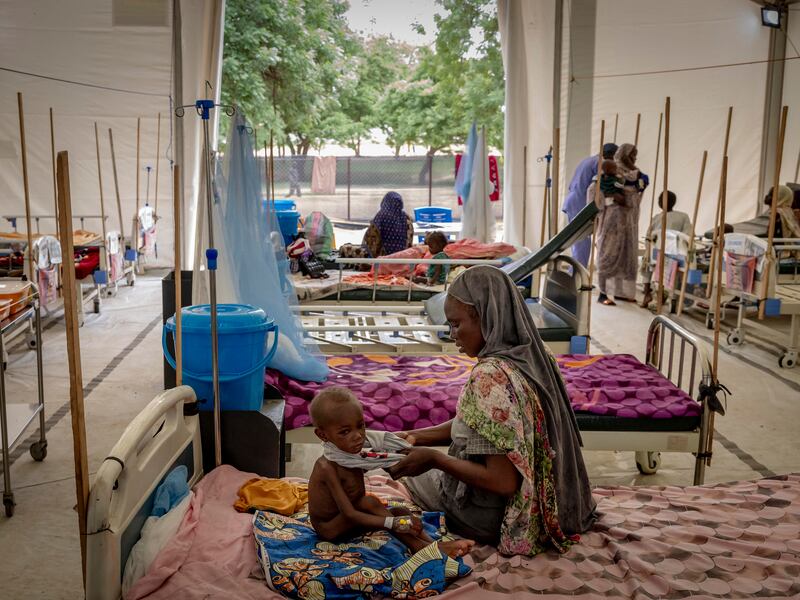
“They shot him in front of our eyes,” said Moaid’s mother, Dahabaya Ibet. Now their struggle was to survive on meagre UN rations.
“Whatever we get, it isn’t enough,” she said, spooning formula into Maiad’s mouth.
The situation is much worse in Darfur, where just a handful of aid groups are still working with international staff. The UN, which pulled out at the start of the war, works through local organisations. The World Food Programme says it can reach just 10 per cent of people in need.
In a survey released last week, Mercy Corps said a quarter of the children in central Darfur state were so malnourished that they could soon die.
Experts say that only the World Food Programme, the world’s largest humanitarian organisation, with a budget of $8.5 billion last year, has the resources and expertise needed to ramp up an emergency operation at scale. But without unimpeded access to the border, providing aid is proving extremely challenging.
It takes trucks several extra days just to reach the border crossing at Tine. To cross into Sudan, trucks need permits issued by authorities in Port Sudan that can take weeks to arrive, if they do at all, aid officials said.
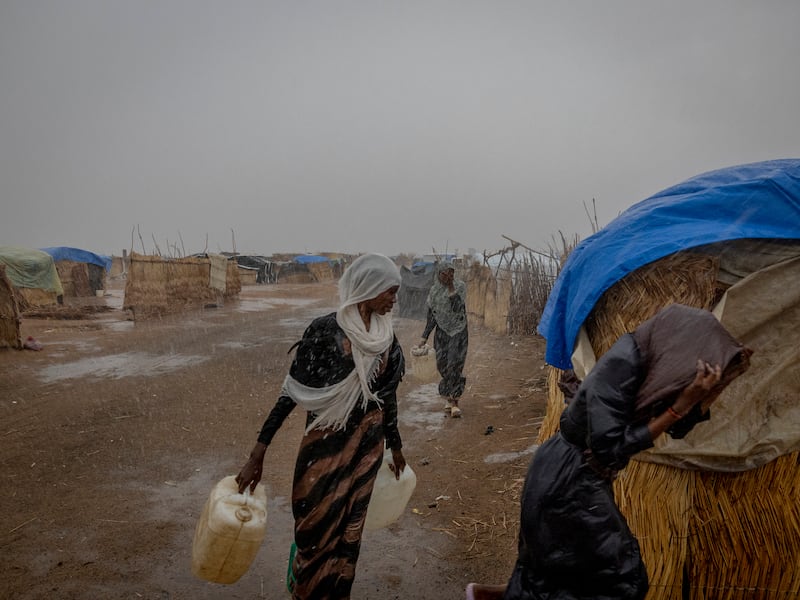
In an interview, Sudan’s ambassador to the UN, Al-Harith Idriss Mohamed, defended the Adré closure, citing evidence collected by Sudanese intelligence of arms smuggling. He said the UN was “happy” with the arrangement of routing trucks north through the border at Tine.
He added that foreign countries predicting a famine in Sudan were relying on “old figures” and seeking a pretext “for international intervention”.
He said: “We have seen deliberate, meticulous politicisation of humanitarian aid to Sudan from the donors.”
At the Adré crossing, the military’s inability to control anything entering Sudan is starkly apparent. Porters with donkey carts said they deliver hundreds of barrels of gasoline that are consumed by the RSF’s four-wheel-drive vehicles, which are usually mounted with guns.
And farther north, the RSF’s powerful patron, the United Arab Emirates, continues to smuggle weapons and cash across the porous border, several western officials said.
The swelling crisis has brought recriminations inside the aid community. In private, aid workers and US officials say the UN leadership should be more forcefully urging the military to reopen the Adré crossing. Some wonder why the organisation has not lined up trucks at the border, as it did in the Gaza Strip last year, to step up the pressure.
The UN humanitarian co-ordinator in Sudan did not respond to questions for this story.
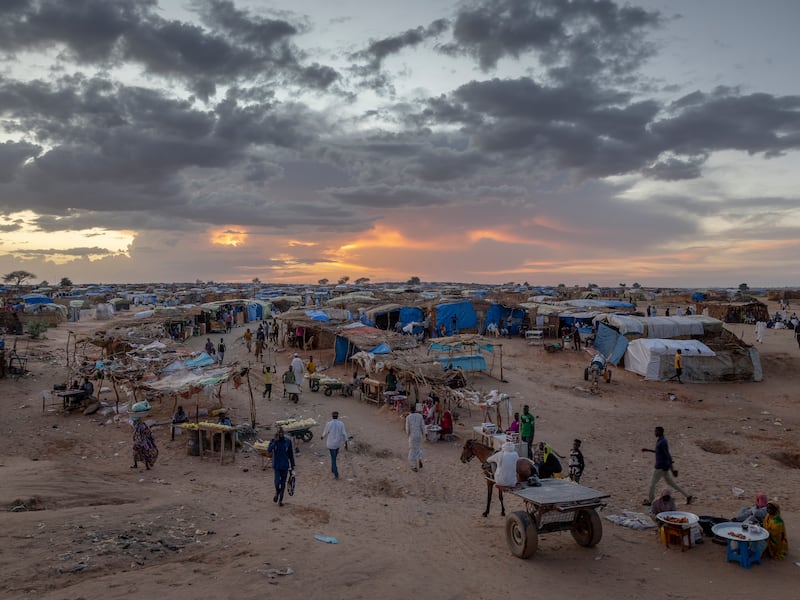
In Washington, intelligence briefings provided to the state department and White House have confirmed the stark projections, issued by aid groups, for mass famine-related deaths by the end of this year, said a senior US official who spoke on the condition of anonymity.
The coming famine is likely to be as deadly as the one in Somalia in 2011, the official said, and by the worst estimates could match the great Ethiopia famine of the 1980s.
To override the blockage at Adré, US officials including Thomas-Greenfield have called on the UN Security Council to permit UN trucks to cross at Adré without military authorisation, as what happened earlier with cross-border aid into Syria. But analysts say that Russia, which recently offered arms to Sudan’s military, would be likely to veto such a resolution.
The other hope now is fresh ceasefire talks, announced in recent days and mediated by the US, that are scheduled to start in Switzerland in mid-August. In an interview, the US envoy to Sudan, Tom Perriello, said he would be pressing both sides to allow full humanitarian access – if they even show up for the talks. – This article originally appeared in The New York Times
2024 The New York Times Company













